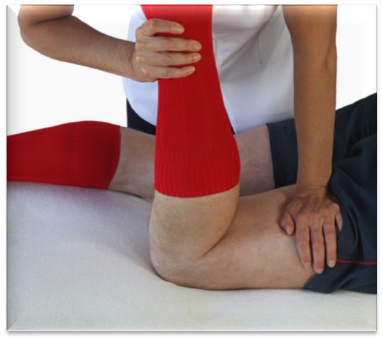The hamstrings are a group of three muscles located at the back of the thigh. They are crucial for nearly every lower-body movement and are essential for activities such as walking, running, climbing stairs, and getting in and out of a car.
Hamstring injuries are common among athletes, especially those participating in high-impact sports like football and basketball. However, they also frequently affect “weekend warriors”—individuals who engage in physical activities like jogging or running without proper warm-up or stretching.
The hamstrings consist of three muscle groups:
- Biceps femoris
- Semimembranosus
- Semitendinosus
These muscles work together to enable the bending of the knee. Hamstring injuries commonly occur when one or more of these muscles suffer a partial or complete tear, typically due to sudden, excessive stress. Tight muscles and insufficient warm-up before physical activity can further increase the risk of injury. Additionally, individuals with a history of hamstring injuries are at a higher risk of re-injury.
How Physical Therapy Helps
Physical therapists play a vital role in the treatment and rehabilitation of hamstring injuries. The first step in recovery involves a detailed assessment. The therapist will conduct a thorough history and clinical examination to determine the severity of the injury and identify the specific muscles involved. This assessment helps create an individualized treatment plan that ensures a safe and effective recovery.
 If the injury is recent, rest is essential to prevent further strain. The therapist may advise avoiding exercise and, in some cases, limiting walking. Crutches may be recommended to provide support and reduce pressure on the injured area.
If the injury is recent, rest is essential to prevent further strain. The therapist may advise avoiding exercise and, in some cases, limiting walking. Crutches may be recommended to provide support and reduce pressure on the injured area.
To manage pain and swelling, physical therapists often suggest using ice packs and compression bandages during the early stages of recovery.
Once the acute phase of injury (characterized by pain and swelling) has passed, physical therapists guide patients through a structured exercise program designed to restore strength, mobility, and muscle control. These exercises may include:
1. Muscle strength exercises – Exercises focused on both static and dynamic strength help rebuild muscle strength and prevent future injuries.
2. Range of motion – Active and passive range-of-motion exercises, which can vary from partial to full range, help maintain flexibility and reduce muscle tightness.
3. Provision of support devices – In some cases, assistive devices like crutches, walkers, or canes may be necessary for short-distance walking. Physical therapists can recommend the appropriate device and ensure correct use during recovery.
Restoring Muscle Control and Balance
 An important goal of physical therapy is to restore muscle control and balance after a hamstring injury. When the hamstrings are injured, the strength ratio between the hamstrings and quadriceps (the muscles at the front of the thigh) can become unbalanced. Weakness or tightness in the hamstrings may also increase the risk of other injuries, such as damage to the anterior cruciate ligament (ACL), which stabilizes the knee.
An important goal of physical therapy is to restore muscle control and balance after a hamstring injury. When the hamstrings are injured, the strength ratio between the hamstrings and quadriceps (the muscles at the front of the thigh) can become unbalanced. Weakness or tightness in the hamstrings may also increase the risk of other injuries, such as damage to the anterior cruciate ligament (ACL), which stabilizes the knee.
Therapists use exercises that focus on balance, weight-bearing, and rapid changes in direction to improve strength and stability in the hamstrings. For athletes, sport-specific movements are incorporated into the rehabilitation process to facilitate a safe return to their sport.
Whether you are an athlete or someone who enjoys occasional physical activity, hamstring injuries can be debilitating. Fortunately, physical therapy offers an effective path to recovery. Through targeted exercises and personalized treatment plans, physical therapists can help you regain strength, mobility, and muscle control—allowing you to return to your regular activities more quickly and with a reduced risk of re-injury.